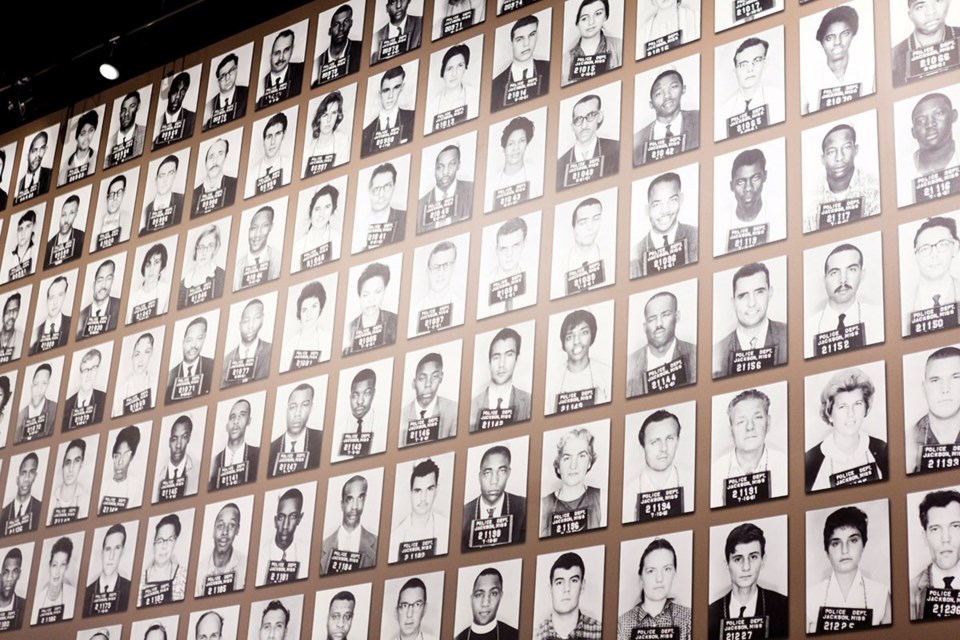As an extreme southern state in southeastern United States, Mississippi has been home to pivotal moments that have arguably redefined civil rights history forever.
The civil rights movement spans a time frame of just a tad over 30 years. For Mississippi, it was the years 1945 to 1976. From a historical standpoint, these 30 years were terse and yet tense. They were times filled with an edgy tension punctuated by blasts of violence. Atrocities, heroism and momentous changes—they all stared the beast of racism in the face. But to go beyond, society must first understand and acknowledge the monster before it can strive for an equality for all.
Now the state wants to set the record straight. The new museum—the only state-operated civil rights museum in the United States—tells that painful story by dealing with a brutal reality through facts, personal experiences, and key contributions of activists who helped change not only Mississippi, but the South and even the world. For many, the state is considered ground zero when it comes to the Civil Rights Movement.
There's a chill in the air as I enter the Mississippi Civil Rights Museum in downtown Jackson, the state's capital. Though it is an early spring morning, busloads of school children gather in line for their turn to learn about the state's sordid past in dealing with racism. In a weird way, I find this rather encouraging. To ignore and to pretend that past atrocities didn't exist, that somehow they weren't real, only invites a repeat of history. Instead, Mississippi has chosen to boldly step forward by grappling with their complicity in prolonging racism and violence of the past. And they want the current generation to know it.
The result is that the museum is particularly penetrating in thought-provoking culpableness. But while this darkness can be oppressive at times, the museum instills hope, as well as a lightness, in an overall shared equality and humanity. After all, poignant grief can not endure forever.
Nowhere is this more evident than in the heart of the museum, a central rotunda where a sound and multi-coloured light show rhythmically increases in heart-palpitating crescendo: This correlates with the number of people present, mesmerizing visitors with the song that civil rights leader Fannie Lou Hammer made famous, "This Little Light of Mine." I for one sat spellbound for close to half-an-hour, absorbing the message of martyrs in the midst of a message of promise and equality. Admittedly, several tears fell down my cheeks as I struggled with the message and the sacrifices of so many.
Though the museum only opened last December, attendance continues to increase beyond expectations. Based on a record-setting attendance, it is expected that the museum may see up to 300,000 visitors in 2018. It might be said that the opening of the museum comes at a very time when the world needs to be reminded about the legacy of civil rights, about equality for all races and creeds. About civility. About human respect.
The Washington Post summarized the sentiment well when it wrote, "Now, at a time when our country is more divided than ever, the state has given all Americans an opportunity to come to Mississippi and reflect on our dark and not-so distant past. The Mississippi Civil Rights Museum is a reason to go—and to learn."
The eight galleries at the Mississippi Civil Rights Museum focus on the years 1945 to 1976—from Mississippi's freedom struggle in a state segregated by black and white to black empowerment from 1965 to the mid-1970s. Embedded within the museum are five lynching monoliths that display the names of 600 victims of racial discrimination.
Expect to find museum space crowded, cramped, and at times, darkly dismal. The designers intentionally built the footprint this way so that the civil rights journey reflects the myopic perspective of the time.
Plan additional time to check out the twin museum next door, Museum of Mississippi History, as well as the nearby Mississippi Museum of Art. Jackson is full of authenticity and sophisticated surprises.
You can't beat a stay at The King Edward Hotel in downtown. A US$90 million renovation brought it back from decades of neglect and it is now known as the Hilton Garden Inn. If you are hankering to try what is billed as the South's best soul food as featured in Southern Living, head to Bully's Restaurant for fried chicken, ox tails, fried okra and banana pudding.




